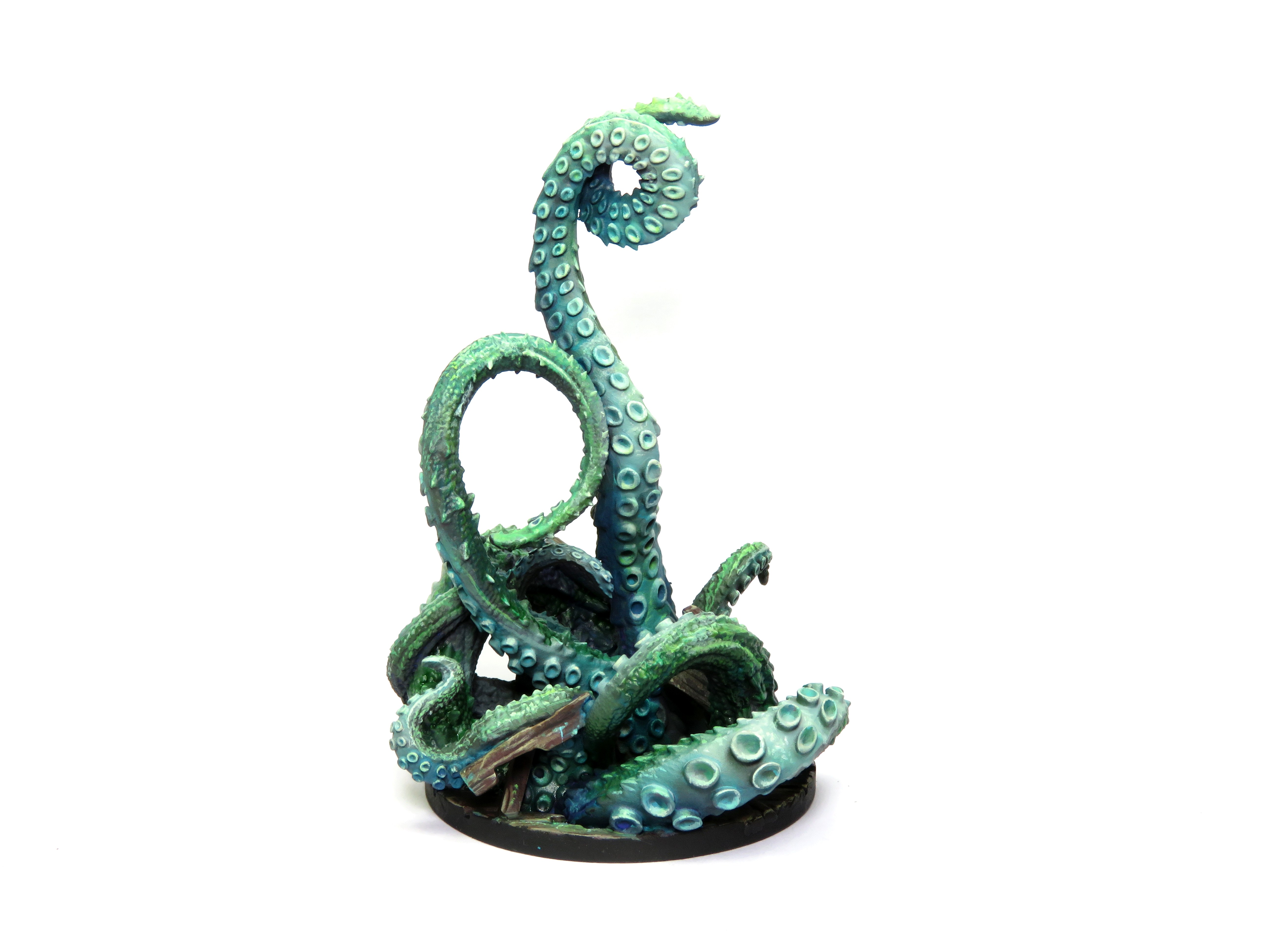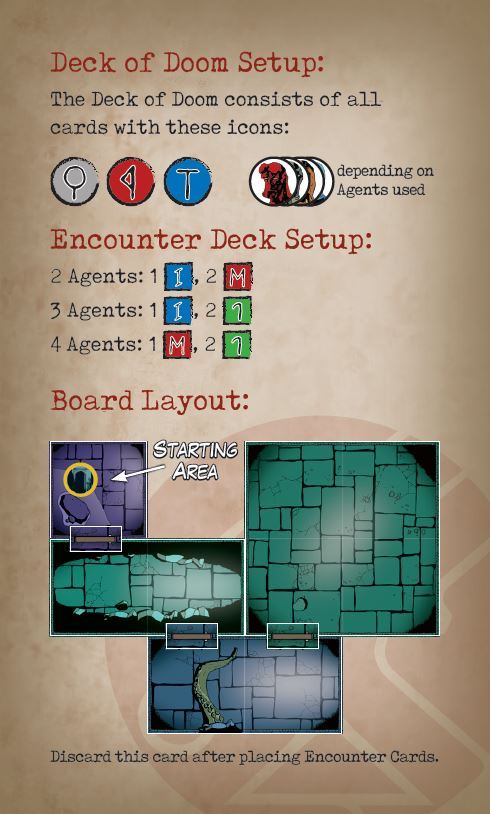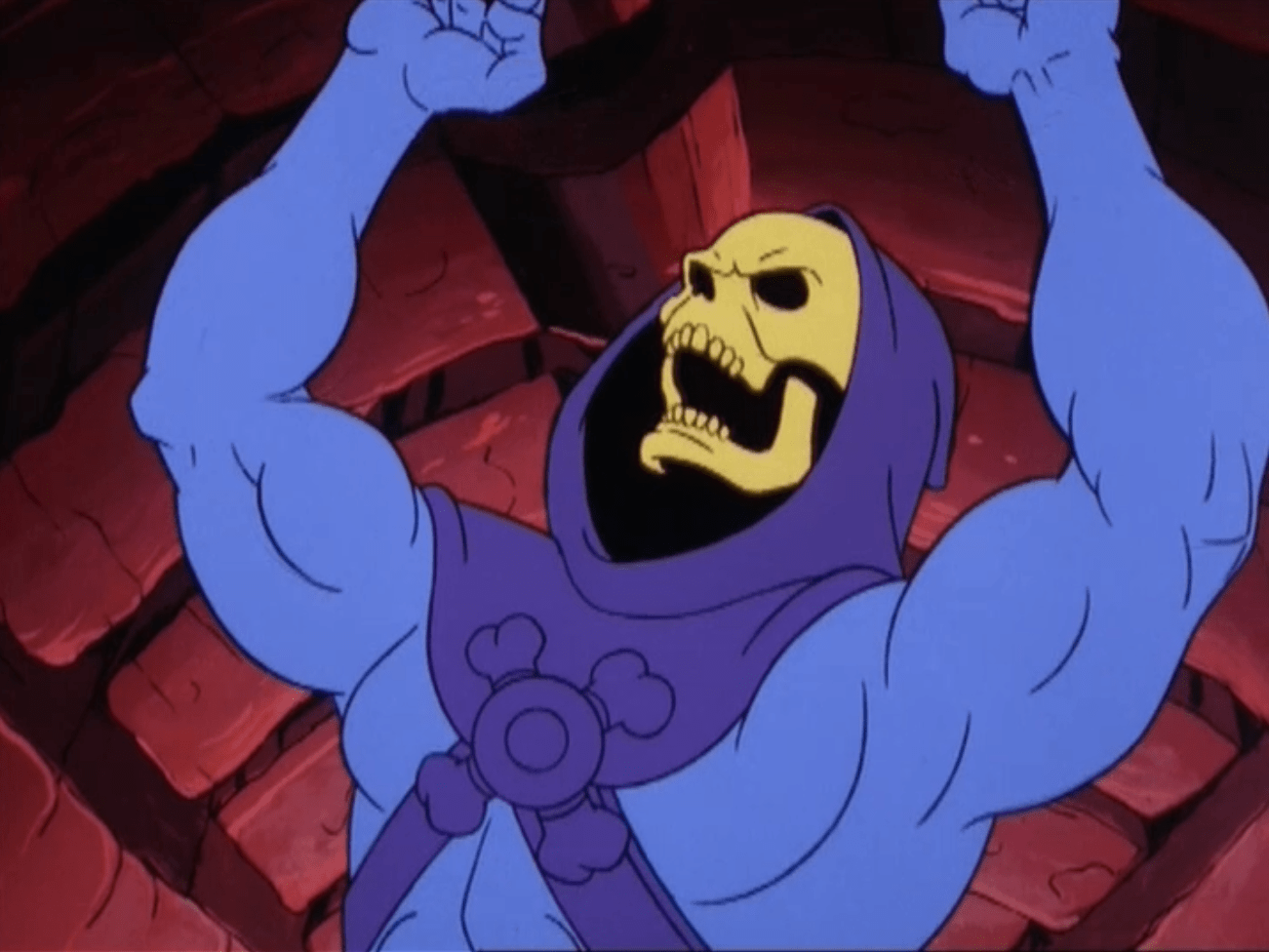
Developing Hellboy: The Board Game – Case Files
With the retail release of Hellboy: The Board Game tantalisingly close, we’re publishing a different article about the game’s mechanics every day. Today it’s my turn, James M. Hewitt, to give the designer’s perspective on some of the key parts of the game. If you missed yesterday’s entry (describing the Agent Cards), you might wanna check it out here.
Today, though, we’re talking about Case Files!

For those of you who aren’t familiar with the Mignolaverse, Hellboy is (sometimes) a field agent for the Bureau for Paranormal Research and Defence. A shadowy organisation founded in the wake of WWII, the B.P.R.D. is dedicated to protecting mankind from all manner of occult threats, from cult uprisings and ancient gods to witches and werewolves. When they catch wind of any such occurrence, they assemble a team of skilled field agents and send them to investigate. Hellboy: the Board Game replicates this on the tabletop, with the players taking control of the B.P.R.D.’s A-Team and taking on some very serious threats indeed.
It actually took a while (and a fair amount of playtesting!) before I hit on an interesting way to represent this in the game. Case Files were the solution!

When you open your copy of H:tBG (acronym alert) you’ll find several decks of cards; you’ll also find several Case Files. Each one is tied to a particular Case (that’s a scenario, in standard gaming lingo) and includes various unique cards. You’ll get a deck of Encounter Cards, which will determine what’s in each location you explore (more on them later in the week), and possibly some other cards to be shuffled into the Deck of Doom or the Requisition Deck (again, more on these later!). Most importantly, though, you’ll find the Case File deck.
The Case File deck is something you’ll want to treat with due reverence. It’s not a normal deck of cards; for starters, you mustn’t shuffle it or look through it! It occupies a space on the HQ board (which Rob’s going to tell you about tomorrow) and handles the pace and narrative flow of the game. Only the top card is visible at any time, and will give instructions for when it should be flipped over. The back of the card might reveal a hidden passageway to a new area, give the players a much-needed leg-up or contain a new objective – anything’s possible!
Some Case File cards might be put “in play”, meaning they’re taken off the top of the deck and placed next to the HQ board. These cards will show a trigger – for example, “flip this card if all the agents are Knocked Out”, or “flip this card if the Information Gathered track reaches 10” (more on that from the delectable Rob tomorrow).

Eventually, each Case File deck will come to the Confrontation, a final showdown against a Boss. Going into the Case the players won’t necessarily know which Boss they’re going to face – they’ll have their briefing, sure, and there might be some clues along the way, so they might think they know what they’re coming up against… but what would Hellboy be without a few unexpected plot twists?
What’s more, there might be multiple routes to a Confrontation. If Rasputin’s cooking up an evil scheme in the basement of a crumbling manor, you’d better hope you can find him through exploring the board… but if you all get knocked out, you might wake up to the sound of maniacal chanting and find yourselves in the middle of the ritual circle, stripped of all your kit! Whatever happens during the game, the Case File deck ensures that you’ll always get to play the Confrontation, even if it means you start at a serious disadvantage; that way, every game ends with an explosive show-stopper, instead of just fizzling out because you had some bad dice rolls.
“Hey, James,” one might ask, “surely this mean you can only play each Case once! What about replayability? You are the literal worst!”

Thanks, convenient hypothetical questioner. Haven’t heard from you in a while!
During playtesting, we’ve found that playing through the same Case File multiple times is absolutely something you’ll want to do. The first time will always be special – after all, you’ll be surprised by what’s going on, and that’s always a laugh – but chances are you won’t beat it. Hellboy: the Board Game can be tough, as all good co-operative games should be, so we’ve made a big effort to make the Cases replayable. Each time you play a Case you’ll find that the Deck of Doom and Encounter Deck will combine in new ways, providing different challenges and keeping things fresh.
Hellboy: The Board Game is available to order NOW from the Mantic website. The retail version will be launched on April 27th in all good game stores.
The post Developing Hellboy: The Board Game – Case Files appeared first on Mantic Blog.
